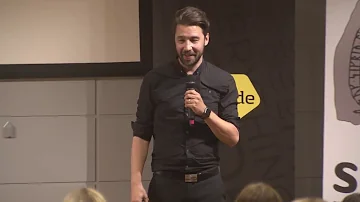What is agave traditionally used for?
Innehållsförteckning
- What is agave traditionally used for?
- What is agave used for besides tequila?
- What can I do with agave flowers?
- How do you eat agave?
- What liquor is agave?
- Are agave flowers edible?
- What do you do after century plant blooms?
- Can u eat agave?
- Is agave good or bad?
- What does agave do to alcohol?
- What are the different uses of agave?
- Where does agave syrup come from?
- What is the difference between agave syrup and nectar?
- How is paper made out of agave?

What is agave traditionally used for?
The juice of the blue agave, cultivated primarily in the state of Jalisco, is used to make tequila; other agave species are used to make mezcal, bacanora, sotol, and pulque.
What is agave used for besides tequila?
Nowadays, agave is more commonly consumed in the form of agave nectar and tequila. Like papyrus, agave has been used to make paper. According to Scientific Americana, “the agave holds the place of Asiatic hemp and Egyptian papyrus.
What can I do with agave flowers?
Yes, you can cut the bloom stalk from the plant as soon as it starts to grow out. However, this won't keep your agave plant alive forever. As a matter of fact, the agave plant starts to produce a bloom stalk as a mark that its life is about to end.
How do you eat agave?
They can be roasted. You chew them then spit out the fiber. The leaves can also be boiled and the juice used as a soup but test a little first. The leaves and juice can be too bitter to eat.
What liquor is agave?
tequila Both tequila and mezcal are made from the harvested core of the agave plant, otherwise known as the “piña.” However, that's where the similarities in production end. Tequila is typically produced by steaming the agave inside industrial ovens before being distilled two or three times in copper pots.
Are agave flowers edible?
Closely related to lilies there are three major parts which are edible: Flowers, stalks or basal rosettes, and the sap. Leaves are a lesser edible part of the plant. During the summer agaves can produce several pounds of flowers each, which can be boiled or roasted. ... They can be roasted.
What do you do after century plant blooms?
After blooming, the century plant dies back, but offsets around its base usually leave gardeners with a supply of plants. Century plants do best in an area that receives at least a half-day of sun and in well-draining soil, in the garden or in a large pot.
Can u eat agave?
There are a few parts of the agave plant that have culinary uses. The flowers are edible and many people toss them in salads. The leaves are rich in agave sap and can be eaten, and the stalk of the plant can be roasted before they flower. This produces a distinctive, sweet molasses flavor.
Is agave good or bad?
Agave is not a healthful replacement for table sugar. While it is less harmful and more natural, people who are closely managing blood glucose should avoid agave. The high fructose content can reduce insulin sensitivity and may worsen liver health. Agave is also a higher-calorie sweetener than table sugar.
What does agave do to alcohol?
According to a 2016 article, the potentially beneficial compounds in agave sugars break down during processing and convert into ethanol, the active ingredient in alcoholic beverages. Some of the most popular, unsupported ideas in circulation claim that drinking tequila can: aid with weight loss.
What are the different uses of agave?
- If you find yourself smelling after wandering through the desert, maybe you should find some agave. Another use for this versatile plant is in soap making. The leaves and roots contain saponins, which can be made into a cleaning agent. By using an extract from these parts of the agave, soap can be made.
Where does agave syrup come from?
- It’s extracted from various species of the agave plant, which grow mainly in Mexico and South Africa. It’s easily dissolvable, meaning it’s particularly suited to use in cocktails and smoothies, and its liquid form means it’s often used in place of honey (by vegans for instance) or golden syrup.
What is the difference between agave syrup and nectar?
- Agave nectar is high in fructose, which is thought to be one of the most damaging forms of sugar, so always use in small quantities and opt to buy organic, raw agave rather than the cheaper, highly processed version. Agave syrup is an imported product, usually originating from Mexico.
How is paper made out of agave?
- According to Scientific Americana, “the agave holds the place of Asiatic hemp and Egyptian papyrus. Ancient hieroglyphics were inscribed on the leaves, macerated in water and glued together as the bark of paper mulberry.” Peeling the leaves and allowing them to dry is the simplest method in which paper is made.














